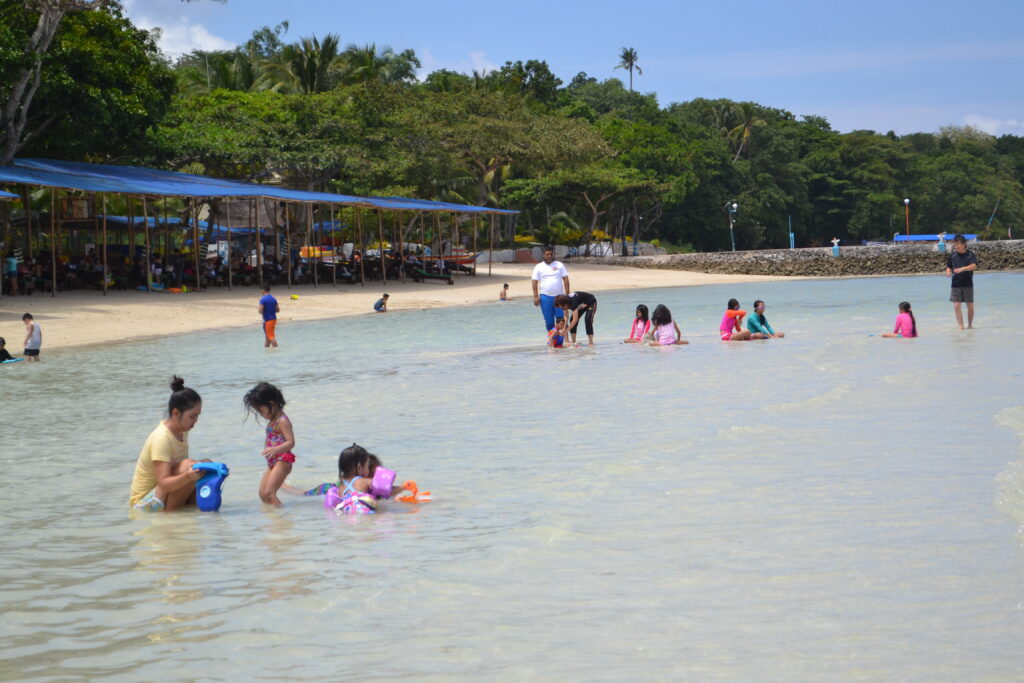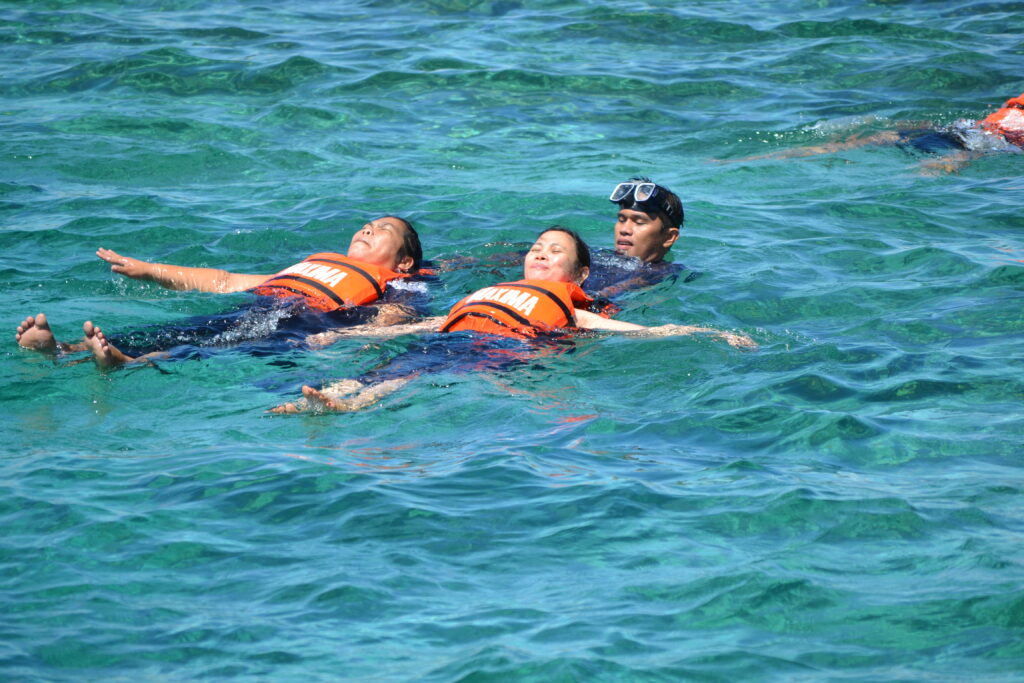Text and Photos by Leandrae T. Lapinig
Drowning is the fourth-leading cause of death from injury in the Philippines, according to the United Nations Children’s Fund (UNICEF), at 12% of the total deaths. Road traffic accidents (20%), gun shots (17%) and stabbings (14%) were the top three causes, while electrocution and falls was ranked fifth (4% each).
The Philippine Statistics Authority (PSA) singled out the month of April as having the highest average number of deaths (355) caused by drowning and submersion. The month of May trailed with 316 reported deaths.
The months of April, August, and September also had a higher number of casualties: 291, 286 and 281, respectively. February had the least number, with 205 deaths. Fewer deaths were also reported during January (226), December (264) and November (267).
Sunday, with 606 deaths, had the highest average number of deaths caused by drowning and submersion. Saturday settled for second with 576 deaths. Wednesday had the least number of deaths: 400.
Incidence among various age groups
Most of those who die of drowning are children and teenagers. According to the findings of a study conducted by Safe Kids Philippines, the Philippine Life Saving Society and the Department of Health, almost 2,000 children die yearly from drowning.
The results of the study – “Child drowning in the Philippines: The silent killer speaks” – ranked drowning as the second leading cause of death among children aged one to 14 years old, outnumbering deaths from serious diseases such as tuberculosis (TB), malnutrition, diarrhea, cancer, and meningitis.

UNICEF research found that drowning rates were highest among boys and girls less than five years old compared to other age groups and higher among females than males for all age groups.
In addition, the drowning rates were higher among males under five years and among those under 15 years compared to females of the same ages. This gender difference is largest for male toddlers whose relative risk for drowning death is 1.5 times higher than female toddlers, the research pointed out.
All over the world, drowning is the third leading cause of unintentional injury death, accounting for 7% of all injury-related deaths, according to the World Health Organization (WHO). “There are an estimated 372,000 annual drowning deaths worldwide,” it says.
Despite limited data, several studies reveal information on the cost impact of drowning. In the United States, for instance, 45% of drowning deaths are among the most economically active segment of the population. Coastal drowning accounts for $273 million each year in direct and indirect costs. In Australia and Canada, the total annual cost of drowning injury is $85.5 million and $173 million, respectively.
Risk factors for drowning
The United Nations health agency says increased access to water is one risk factor for drowning. “Individuals with occupations such as commercial fishing or fishing for subsistence, using small boats in low-income countries are more prone to drowning,” the WHO explains. “Children who live near open water sources, such as ditches, ponds, irrigation channels, or pools are especially at risk.”
In flood disasters, which is common in the country, drowning accounts for 75% of deaths, according to WHO. “Flood disasters are becoming more frequent and this trend is expected to continue,” it says. “Drowning risks increase with floods particularly in low- and middle-income countries where people live in flood-prone areas and the ability to warn, evacuate, or protect communities from floods is weak or only just developing.”
Other factors that are associated with an increased risk of drowning are as follows: lower socio-economic status; infants left unsupervised or alone with another child around water; alcohol use, near or in the water; medical conditions, such as epilepsy; and tourists unfamiliar with local water risk and features.
Drowning and near-drowning
Drowning and near drowning are two different terms. Near drowning is “severe oxygen deprivation” (suffocation) caused by submersion in water but not resulting in death; when death occurs, the event is called drowning.
“When a person is submerged under water, water enters the lungs,” explains The Merck Manual of Medical Information. “The vocal cords may go into severe spasm, temporarily preventing water from reaching the lungs. When filled with water, the lungs cannot efficiently transfer oxygen to the blood. The decrease in the level of oxygen in the blood that results may lead to brain damage and death.”
The WHO defines drowning as “the process of experiencing respiratory impairment from submersion/immersion in liquid.” Outcomes are classified as death, morbidity, and no morbidity.
What actually happens
Drowning itself is quick and silent, although it may be preceded by distress, which is more visible. “People who are drowning and struggling to breathe are usually unable to call for help,” the Merck manual reminds. “Children who are unable to swim may become submerged in less than one minute compared with adults, who may struggle longer.”
What happens during the drowning event? Dr. Ben Wedro, who practices emergency medicine at Gundersen Clinic, a regional trauma center in La Crosse, Wisconsin, shared this sequence:
First, the person panics or struggles, followed by submersion with breath-holding, until the victim finally, involuntarily takes in a breath of water. Loss of consciousness can begin within three minutes of being under water. The brain may suffer damage if it is deprived of oxygen for more than six minutes. The heart may go into an irregular rhythm that doesn’t allow the heart to pump blood, if it too is deprived of oxygen for more than a few minutes.
People who survived drowning share their experience of having symptoms ranging from anxiety to near death. “They may be alert, drowsy, or comatose,” the Merck manual informs. “Some may not be breathing. People who are breathing may gasp for breath or vomit, cough or wheeze. The skin may appear blue (cyanosis), indicating insufficient oxygen in the blood. In some cases, respiratory problems may not become evident for several hours after near drowning.”

Drowning doesn’t just happen in lakes, rivers and oceans. A person can get drowned in a bathtub – or even a wading pool. Sometimes, drowning occurs because of another injury, a heart attack, or stroke that causes unconsciousness. Sometimes, it can happen from a head injury caused by diving into shallow water. Cramps, too, can cause panic, which in turn may lead to drowning.
Drowning is an emergency situation. Just in case you spot someone drowning far out in the water and you are on land, what should you do? “Get help as fast as you can,” suggested Dr. Stephen J. Rosenberg and Karla Dougherty, authors of The Complete Idiot’s Guide to First Aid Basics. “As frustrating as it can be, the odds are against you. If you are not someone equipped to handle crashing waves, you are likely to become a victim instead of a hero.”
For those who want to be a hero, here’s a tip from the Wikipedia: “Rescue involves bringing the person’s mouth and nose above the water surface. A drowning person may cling to the rescuer and try to pull himself out of the water, submerging the rescuer in the process. Thus, it is advised that the rescuer approach with a buoyant object, or from behind, twisting the person’s arm on the back to restrict movement. If the rescuer does get pushed under water, they should dive downwards to escape the person.” – ###








